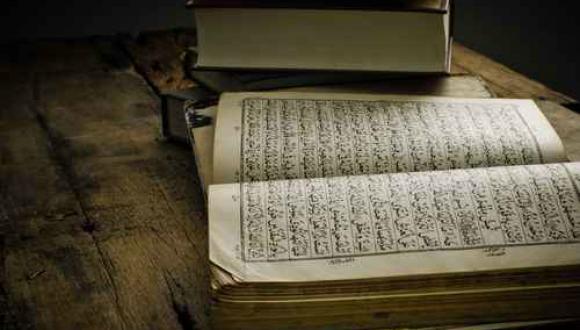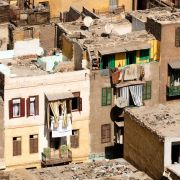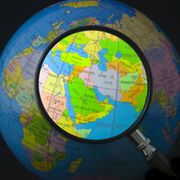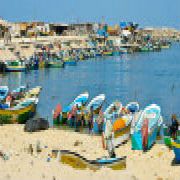The Blame Game, Part 2
 The unwillingness of Middle East area specialists to use social science helps to explain some of the inadequacies of contemporary studies of the region and the extraordinary inaccuracies in Juan Cole's article cited in last month's edition of Iqtisadi. According to Timur Kuran, Middle East Studies has traditionally drawn heavily on the humanities and has neglected the social sciences. This has meant that much useful research has been missed. As a result, the Middle East appears infrequently in social science literature; Middle Eastern data are little used by scholars.
The unwillingness of Middle East area specialists to use social science helps to explain some of the inadequacies of contemporary studies of the region and the extraordinary inaccuracies in Juan Cole's article cited in last month's edition of Iqtisadi. According to Timur Kuran, Middle East Studies has traditionally drawn heavily on the humanities and has neglected the social sciences. This has meant that much useful research has been missed. As a result, the Middle East appears infrequently in social science literature; Middle Eastern data are little used by scholars.
There are good reasons for Middle East area specialists to avoid uncritically transferring ideas developed within disciplines dominated by scholars whose knowledge of the Middle East is superficial. The global predictions of mid-twentieth century modernization theory – the belief that industrialization and economic development lead directly to positive social and political change – were proven wrong regarding the role of religion that remained much more potent than the theory predicted (The most notable example was Daniel Lerner’s 1958 book, The Passing of Traditional Society: Modernizing the Middle East). Earlier historians, who characterized Middle Eastern political history as a sequence of uniformly despotic regimes, overlooked important variations as well as evidence of institutional dynamism. Kuran notes the need to distinguish between intellectual skepticism, which is central to all good scholarship, and the blind dismissal of influential work, which can be self-limiting.
Sometimes the lack of interest in the analytic social sciences has been motivated by a desire to avoid Eurocentrism, Orientalism, or other biases. Another reason was the perception that the social sciences produce theories that were unsubstantiated by data. Although this may have protected the field from inaccurate generalizations, its harm to the learning process greatly outweighed the benefits. It deprived new generations of useful skills and restricted the questions they asked and the paths of inquiry they pursued. It also reinforced the isolation of Middle East Studies from the social sciences, to the detriment of both the study of the region and the production of knowledge in general.
The desire to avoid an Orientalist bias generated an aversion to making judgments, except in contexts where the Middle East may have outperformed Europe, such as that of agricultural or scientific productivity in the early Middle Ages. As a result, Middle East experts avoid identifying deficiencies and do not explain their causes. It also leads researchers to avoid interregional and inter-temporal comparisons, as though reporting weakness in one specific place, time, or context amounts to condemning an entire civilization (See: Timur Kuran, “Synergies between Middle East Economic History and the Analytic Social Sciences,” International Journal of Middle East Studies 44:3 August 2012).
What do economists and economic historians have to tell us about the region and its problems? The short answer is a great deal, although for reasons of space only the briefest of surveys is possible here. The literature on the Islamic Empire is limited, although there are significant publications on the achievements of Arab agriculture and scientific development in the Golden Age (For example: Andrew M. Watson. The Arab Agricultural Revolution and Its Diffusion, 700–110, The Journal of Economic History, 34:1, March 1974).
There is a much larger literature on the Ottoman Empire and its legacy. Although there is no complete consensus, a number of key findings are clear. The regions under Ottoman control experienced slower economic growth than Western and Central Europe when industrialization began there and, over time, the gap between these regions grew.
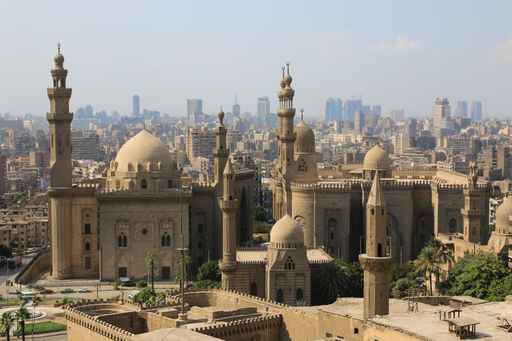
Why did this happen? Some writers have blamed Islam, others have suggested that the Islamic legal system is the culprit, and others have emphasized the role of the political system. Kuran has shown that Middle Eastern institutions, including ones rooted in Islam, unintentionally blocked the transition to a more modern economy. These obstructions included Islamic inheritance law, whose egalitarian character inhibited capital accumulation, and the individualism of Islamic law. Islamic law lacked a concept of corporation. A corporation shields the individual from legal liability, thus facilitating the development of commerce and industry. Its absence in the Islamic world hindered organizational development and contributed to keeping civil society weak. Finally, the waqf, a form of Islamic trust, locked vast resources into inflexible organizations that became dysfunctional over time. None of these institutions posed an economic disadvantage at the time of their emergence, nor did they ever cause an absolute decline in economic activity, but they became handicaps by perpetuating themselves during the long period when Western Europe took the lead in developing the institutions of the modern economy (See: Timur Kuran, The Long Divergence: How Islamic Law Held Back the Middle East, Princeton University Press, 2012).
Avner Greif has compared the ways in which European and Middle East traders performed in the late Middle Ages. He found that European culture encouraged impersonal trade, while Middle Eastern culture encouraged trade between members of extended families or closely connected communities. The two groups were in competition, and the Europeans won out and gradually came to dominate Mediterranean trade. The social organization of the late medieval Middle East traders resembled modern collectivist societies while that of the late medieval Europeans resembled modern individualist societies. The Middle East traders (Greif used the example of Jews who had absorbed the dominant Islamic cultural values of the region in which they lived) considered themselves members of the same people. Their loyalty was to the umma and their membership meant that they were mutually responsible for each other, and the fact they were Jews who had moved from Iraq to Tunisia reinforced this. They “retained social ties that enabled them to transmit information that enabled them to maintain collectivist equilibrium.” The collectivist culture encouraged them to retain business affiliations within this network. The Middle East traders made great efforts to share information so as to maintain their trading network. Their primary concern was to discover if any of them, acting as an agent, tricked another and thus caused him a loss. The knowledge that if they acted dishonestly they would be revealed to the community was a strong incentive to behave honestly. Remaining honest was a way of staying in business, because in most circumstances, it would not pay to cheat.
The European Christians, represented in Greif’s work by Genoese traders, had an individualistic culture. They maintained as much secrecy about their business relations as they could; they did not restrict their choice of agents to members of their family or to others with whom they had personal connections. In the absence of a network that would inform them of an agent’s misconduct, they were forced to develop impersonal systems of enforcement, the most important of which was the legal system. This was, over time, to prove invaluable for the development of trade and the economy.
The difference in values between Middle East and European traders played a role in determining how institutions evolved, which in turn influenced economic development over hundreds of years. How did cultural differences manifest themselves in the way trading was carried out? Apart from the development of legal systems mentioned above, the Genoese developed bills-of-lading as a method of documenting obligations and transactions, while the Middle East traders did not. The Genoese were also more likely than the Middle Eastern traders to be economically upwardly mobile, to experience greater division of labor, and to develop the legal system. This is what happened in Europe with profound, long term economic consequences. The belief system generated institutions that permitted economic growth. Either the absence of these institutions or their weakness was a cause of economic problems in the Middle East (See: Avner Greif, Institutions and the Path to the Modern Economy, Cambridge University Press, 2006).
Others have placed greater emphasis on political processes. The Ottoman rulers saw the private sector as a source of revenue and wanted to prevent it from developing into a separate source of power. Sevket Pamuk has emphasized that despite institutional change in the Ottoman Empire, political power remained very highly concentrated in the hands of the Sultan. The private sector was not represented in court or the central government (See: Sevket Pamuk, “Political Power and Institutional Change: Lessons from the Middle East,” Economic History of Developing Regions 27: Supplement 1, 2012).
Eric Jones emphasized the advantages of the more decentralized system of governance in Europe compared to the centralized system in the Ottoman Empire. According to Jones, intensive economic growth in Europe was largely due to the relatively liberal political environment: unlike the imperial states of China, India, and the Islamic world, the states of early modern Europe did not siphon the wealth generated by entrepreneurs and merchants in their lands. While European states did not necessarily promote capitalism and economic growth, they at least refrained from stifling it, argued Jones (See: Eric Jones, The European Miracle: Environments, Economies and Geopolitics in the History of Europe and Asia, Cambridge University Press, 1981).
Lisa Blaydes and Eric Chaney noted a divergence in the duration of rule for monarchs in Western Europe and the Islamic world beginning in the medieval period. While leadership tenures in the two regions were similar in the eighth century, Christian kings increasingly lived longer than Muslim sultans. They argued that forms of executive constraint that emerged under feudal institutions in Western Europe were associated with increased political stability and find empirical support for this. While feudal institutions served as the basis for military recruitment by European monarchs, Muslim sultans relied on Mamluks—military slaves imported from non-Muslim lands. Reliance on Mamluk armies limited the strength of local notables vis-a-vis the sultan, hindering the development of a productively adversarial relationship between ruler and local elites. They argued that Muslim societies’ reliance on Mamluks, rather than local elites, as the basis for military leadership, may explain why the Glorious Revolution occurred in England, not Egypt (Lisa Blaydes and Eric Chaney, “The Feudal Revolution and Europe’s Rise: Political Divergence of the Christian West and the Muslim World before 1500 CE,” American Political Science Review 107: 1, February 2013).
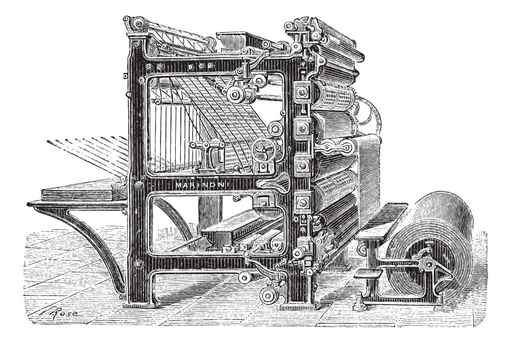
The reasons for technological backwardness have also been explored. Although the Ottomans were quick to adopt advances in military technology, they waited for almost three hundred years to allow the first book to be printed in Arabic script. Metin Cosgel, Thomas Miceli, and Jared Rubin explained the differential reaction to technology using a political economy approach. This focused on the legitimizing relationship between the rulers and the military or religious authorities. The Ottomans accepted new military technologies such as gunpowder and firearms because they increased the net revenue available to the ruler and reduced the expected value of revolting against him. But they objected to the printing press because it would have decreased the ruler's net revenue by undermining the legitimacy provided by religious authorities, and it would have raised the probability and expected value of a revolution. By the eighteenth century, the printing press was allowed after alternative sources of legitimacy emerged (See: Metin Cosgel, Thomas Miceli, and Jared Rubin, “Political Legitimacy and Technology Adoption," Journal of Institutional and Theoretical Economics 168:3, September 2012).
Daron Acemoglu and James Robinson have emphasized the importance of institutions in economic development, and have illustrated this most clearly in the context of Korea. While Korea is a remarkably homogeneous nation, the North is among the poorest on earth while the South is among the richest. South Korea created a society with incentives; it rewarded innovation and encouraged participation in the economy. The economic success was sustained because the government became accountable and responsive to its many citizens. The differences between North and South Korea are due to the politics that created these completely different institutional trajectories. The political and economic system in the South is inclusive: there are incentives to work and thus improve one's standard of living. In the North, the system is exclusive: those who lack personal or political connections are doomed. With regard to the Middle East, they state that the economic changes that took place in England did not occur in the Ottoman Empire because the latter had extractive, absolutist political institutions and extractive economic institutions (See: Daron Acemoglu and James Robinson, Why Nations Fail: The Origins of Power, Prosperity, and Poverty, Crown Publishers, 2012).
Political control can change without deep institutional change or reform. This has been famously examined by Deepak Lal, who explained the persistence of the caste system in India, which lasted for a thousand years until the twentieth century. The ancient Hindus tried to overcome a series of chronic social and economic problems by creating a unique institution: the caste system. When the caste system began, there was a severe shortage of manpower that has persisted for much of India’s history since then. In order to retain manpower in agriculture and prevent it from being conscripted into armies or forcefully removed for other purposes, the caste system was developed. It in effect made it impossible for people to leave their villages or change professions. Despite or perhaps because India was divided into many warring factions, the caste system provided a vital element of stability and a supply of agricultural labor. In the harsh environment dominated by the monsoon, agriculture was thus maintained throughout the country despite the ravages of war (See: Deepak Lal, Hindu Equilibrium, Oxford University Press, 2005).
Something similar happened in the Middle East, where there were changes in political control but governance remained highly centralized. The Ottomans were replaced by Western rulers in the early twentieth century and gradually Arab countries gained their independence. The political scientist Nazih Ayubi noted the similarities between Arab political systems and those that preceded them. He stated that the Arab state was strong and that it dominated a weak society, but he argued that three interconnected factors drastically limited its capacity for social control. The first was vested interests against political or economic liberalization that would weaken its power and role. The second was a culture favorable to authoritarianism. The third was an unwillingness to make reforms that were liable to result in demands for greater redistribution of political power and economic resources (See: Nazih Ayubi, Over-stating the Arab State: Politics and Society in the Middle East, I.B. Tauris, 1996).
The consequences of economic policies adopted in two successor states of the Ottoman Empire – Egypt and Turkey– were analyzed by the economist Bent Hansen. His work is useful in this context because it covers the period from independence in the 1920s (that was full for Turkey and partial for Egypt) to the early 1980s. The book is unusual in that it combines political economy and econometric analysis of two countries that had major Ottoman legacies. In other words, it explicitly takes institutional factors into account and provides quantitative analysis of their consequences. Hansen was eclectic in using analytic tools and stated that:
Radical stereotypes of class struggle, neocolonialism, and dependency were not useful for understanding developments. The "new" political economy, on the other hand, helps to explain, in terms of political exchange, details of politics during the period of democracy in Egypt from 1923 to 1952 and in Turkey since 1950 (with interruptions by temporary military takeovers). For the periods of dictatorship in Egypt since 1952 under Nasser, Sadat, and Mubarak, and in Turkey before 1950 under Ataturk and the Kemalists, the new political economy is less useful. While the political economy under dictatorship and military rule in Turkey may best be characterized as enlightened, platonic guardianship, in Egypt it has been a peculiar mixture of predatory rule and social compact, a solution typical of weak dictatorship with a self-serving elite, forced for its survival to placate the populace. From the outset, balanced sectoral growth was visualized in both Egypt and Turkey, but both the choice and implementation of development strategy and institutional settings have in each country been decisively influenced by ideologies adopted by ruler's nationalistic elites. (Bent Hansen, The Political Economy of Poverty, Equity and Growth: Egypt and Turkey, Oxford University Press, 1991).
What can be concluded from this brief survey? Economic analysis suggests that many of the problems facing the Arab Middle East are endogenous or internal. Other parts of the world also had heavily negative legacies and suffered from colonialism, but, after independence, ceased blaming outsiders for their problems and began their own development.
The unwillingness to acknowledge domestic causation by many in the region and by Middle East scholars abroad was an issue that concerned Charles Issawi, the doyen of Middle East economic historians fifty years ago. This self-delusion provoked him, in 1958, to write a fable titled, "The River and the Fire: A Cautionary Tale." The fable tells the story of the inhabitants of Ar, who had become so used to protecting themselves against the ravages of the River that when they were threatened by Fire, most of them failed to react to the dangers it posed (First published in Adab, 1962 and republished in Charles Issawi, The Arab World's Legacy, Darwin Press, 1981).
In a different but related context the Syrian poet, Adonis recently spoke about the dangers of ignoring reality and its prevalence.
Our modernity is behind us, the only way to reverse that is to reverse the path of our thinking. The best poets who moved from the language of the city and carved a new language that suits the metropolitan life like Abu Nawas, or those who restructured the poetics of the Arabic language, like Abu Tamam, and reinterpreted the inherited religious and social legacy, like Al-Maarri, all existed in the early era of Islam. Now the question is how all these achievements happened in the past and not the present is the big question that is challenging us….
The extremists represented in ISIS or Jabhat Al-Nusra didn't fall from the sky, they are the extension and the result of a long Islamic history. Arab-Arab wars have never ceased during the past 14 centuries, since the establishment of the first state in Islam, which was built on violence and the exclusion of others, contemporary terrorism today is just a part of the long history of terrorism that we have.
We lack critical thinking and we are very self-righteous, the Arab man is always right, he exists, grows up and dies infallible, innocent of every wrong, the other is always the one at fault, the real revolution has to be against ourselves first, and then we will know how to rebel against the world and against others.
… mainstream Arab culture teaches nothing but lying, hypocrisy and insincerity, censorship is an organic component of Arab culture, not only the one imposed by authority. It is just part of the wider social and political censorship, I can't say all that I'm thinking, even to myself.
This essay was originally published in Iqtisadi: Middle East Economy. The author, Dr. Paul Rivlin, is a Senior Research Fellow at Tel Aviv University’s Moshe Dayan Center for Middle Eastern and African Studies.


